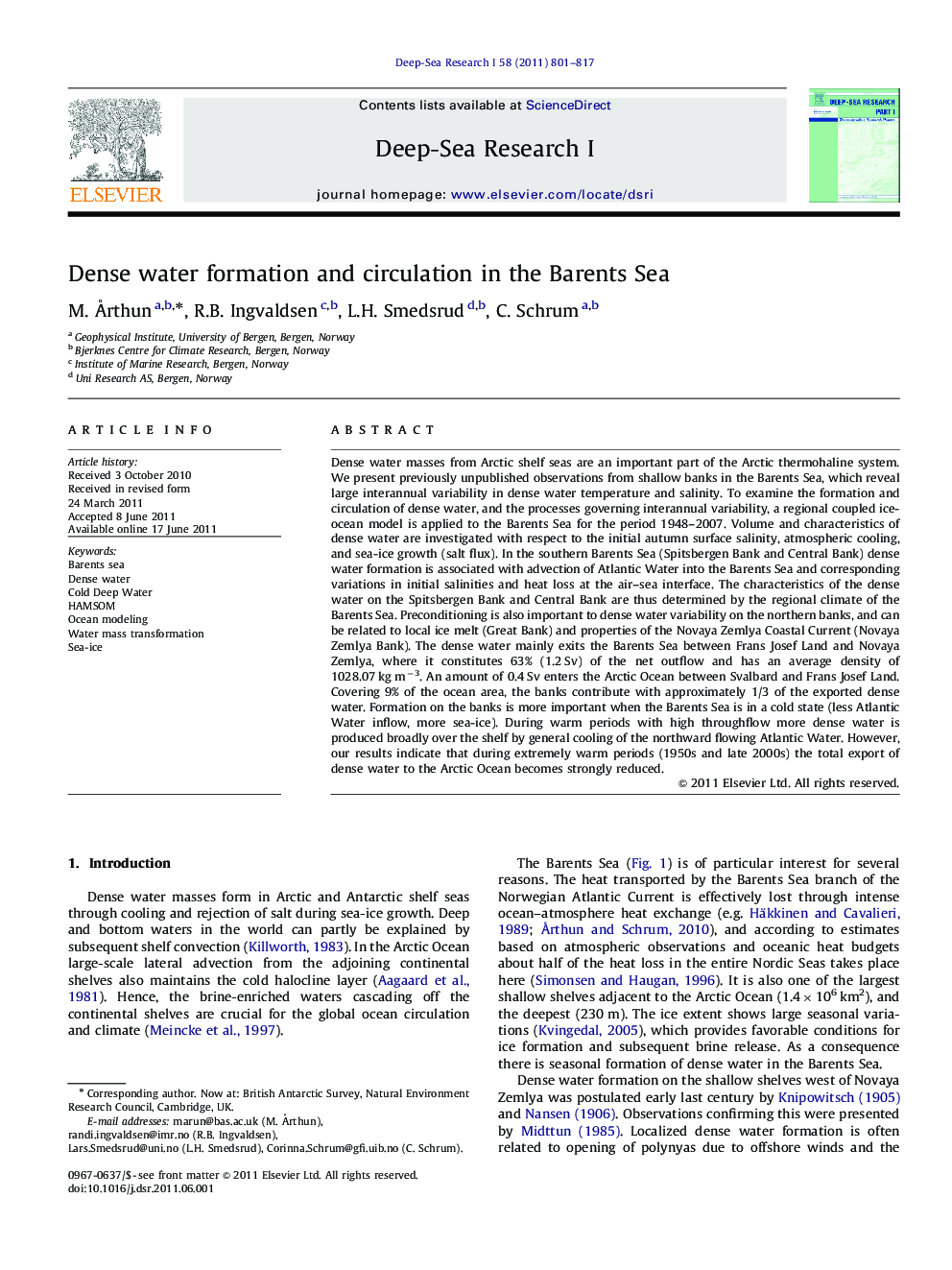| کد مقاله | کد نشریه | سال انتشار | مقاله انگلیسی | نسخه تمام متن |
|---|---|---|---|---|
| 4534882 | 1326067 | 2011 | 17 صفحه PDF | دانلود رایگان |

Dense water masses from Arctic shelf seas are an important part of the Arctic thermohaline system. We present previously unpublished observations from shallow banks in the Barents Sea, which reveal large interannual variability in dense water temperature and salinity. To examine the formation and circulation of dense water, and the processes governing interannual variability, a regional coupled ice-ocean model is applied to the Barents Sea for the period 1948–2007. Volume and characteristics of dense water are investigated with respect to the initial autumn surface salinity, atmospheric cooling, and sea-ice growth (salt flux). In the southern Barents Sea (Spitsbergen Bank and Central Bank) dense water formation is associated with advection of Atlantic Water into the Barents Sea and corresponding variations in initial salinities and heat loss at the air–sea interface. The characteristics of the dense water on the Spitsbergen Bank and Central Bank are thus determined by the regional climate of the Barents Sea. Preconditioning is also important to dense water variability on the northern banks, and can be related to local ice melt (Great Bank) and properties of the Novaya Zemlya Coastal Current (Novaya Zemlya Bank). The dense water mainly exits the Barents Sea between Frans Josef Land and Novaya Zemlya, where it constitutes 63% (1.2 Sv) of the net outflow and has an average density of 1028.07 kg m−3. An amount of 0.4 Sv enters the Arctic Ocean between Svalbard and Frans Josef Land. Covering 9% of the ocean area, the banks contribute with approximately 1/3 of the exported dense water. Formation on the banks is more important when the Barents Sea is in a cold state (less Atlantic Water inflow, more sea-ice). During warm periods with high throughflow more dense water is produced broadly over the shelf by general cooling of the northward flowing Atlantic Water. However, our results indicate that during extremely warm periods (1950s and late 2000s) the total export of dense water to the Arctic Ocean becomes strongly reduced.
► Large temporal and spatial variability in observed dense water characteristics.
► Regional differences in dense water formation processes on shallow banks identified.
► Elucidation of dense water circulation within the Barents Sea.
► Dense water contribution from banks compared to regional dense water formation.
► Dense water outflow to the Arctic Ocean strongly reduced during warm periods.
Journal: Deep Sea Research Part I: Oceanographic Research Papers - Volume 58, Issue 8, August 2011, Pages 801–817